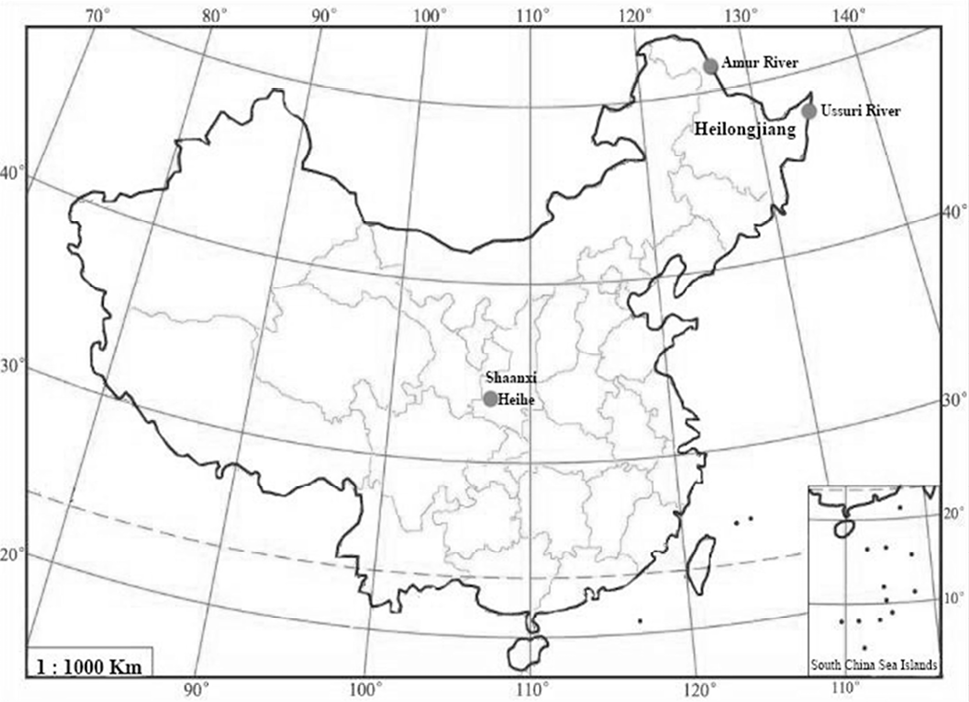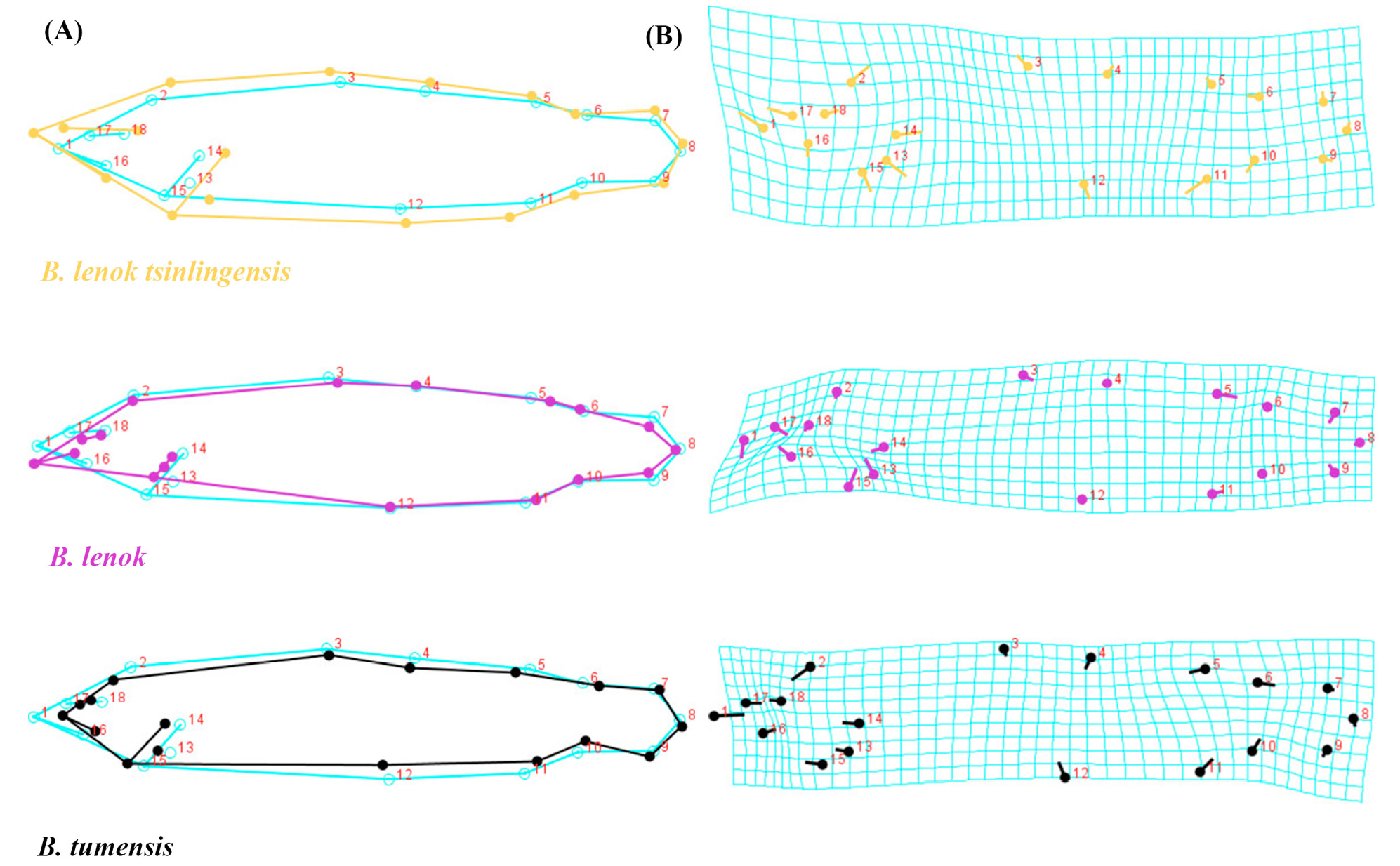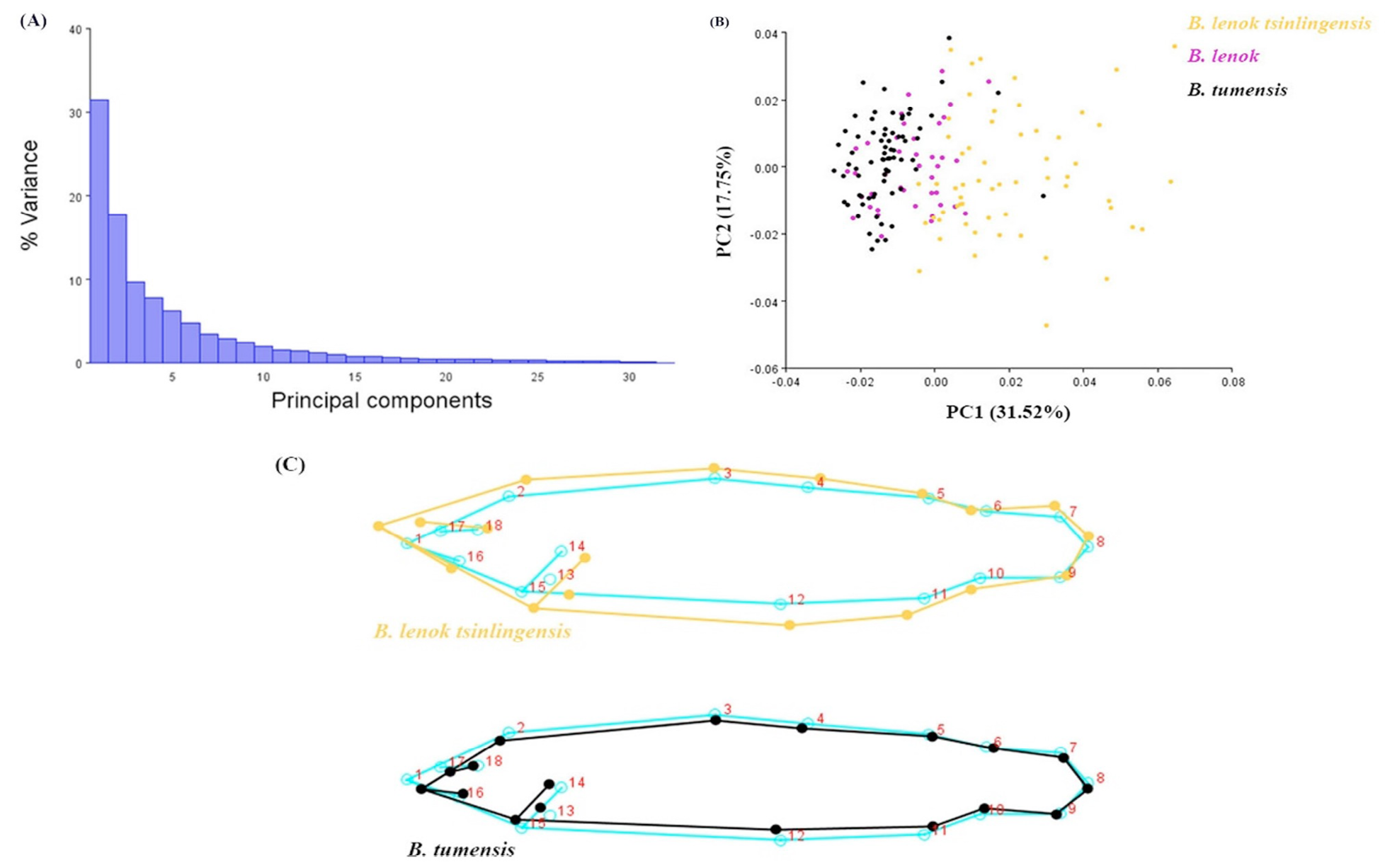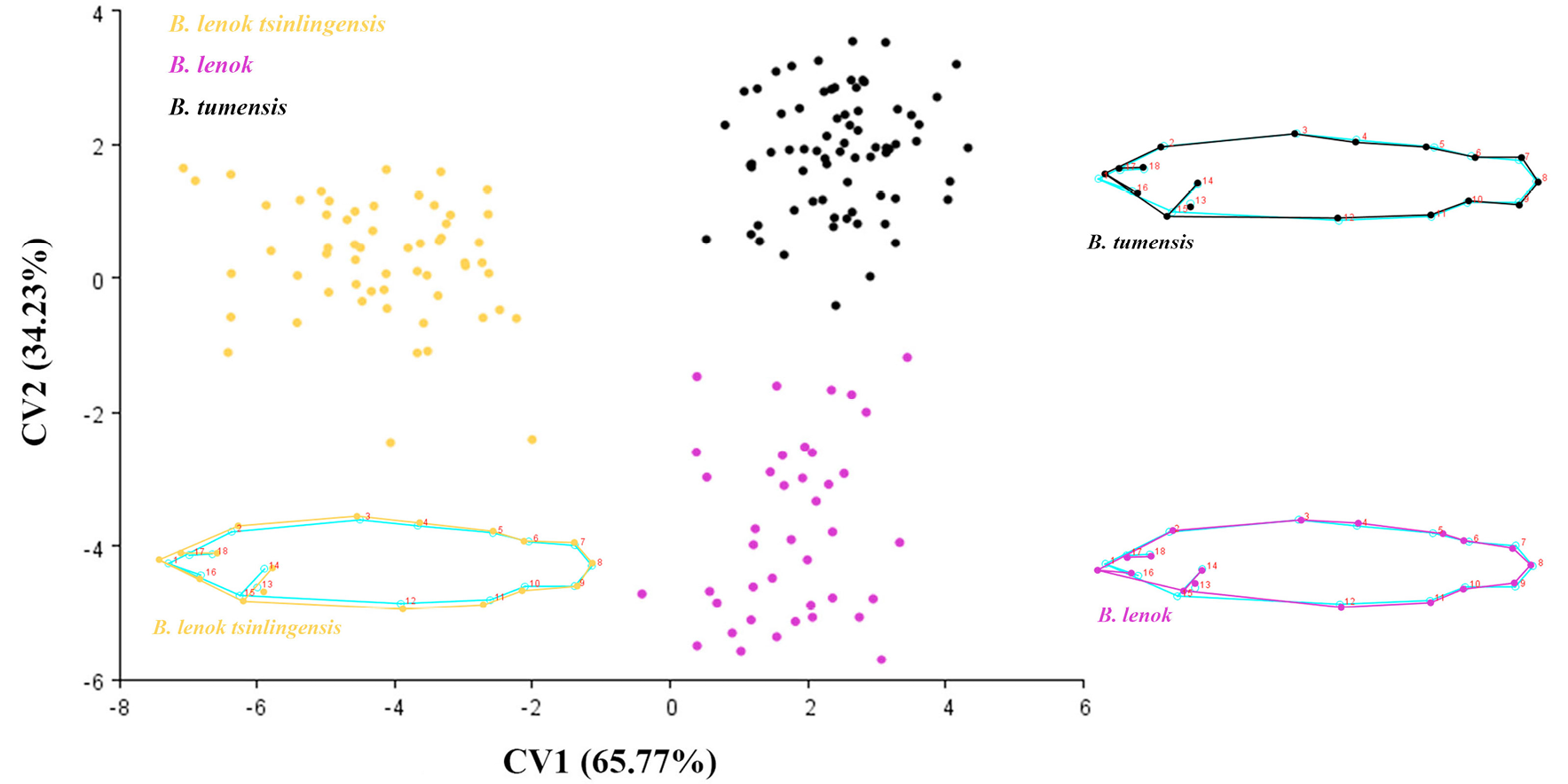Geometric Morphometric Analysis of the Morphological Variation among Three Lenoks of Genus Brachymystax in China
Geometric Morphometric Analysis of the Morphological Variation among Three Lenoks of Genus Brachymystax in China
Yanxiao Meng1, Guihua Wang1, Dongmei Xiong1,*, Haixia Liu1, Xiaolin Liu1, Lixin Wang1 and Jianlu Zhang2
Geographical locations of the samples used in the present study.
Position of the 21 landmarks used for body shape analyses of the Brachymystax: 1, anterior tip of the snout at the level of the upper jaw; 2, posterior margin of the neurocranium; 3, dorsal fin origin; 4, posterior insertion of the dorsal fin base; 5, origin of adipose fin; 6, terminal of adipose fin base; 7, dorsal origin of caudal fin; 8, middle of caudal base; 9, ventral origin of caudal fin; 10, posterior end of anal fin base; 11, origin of anal fin; 12, origin of pelvic fin; 13, origin of pectoral fin; 14, trailing edge of the gill cover; 15, indentation where the opercular cover and sternohyoideus muscle cross; 16, upper jaw tip (17 and 18, diameter of the eye; 19, the middle point of the line going from the caudal part of the head to the bottom of the head; 20, the middle point of the line going from the rostral point of the dorsal fin base to the bottom of the body; 21, the middle point of the line going from the rostral point of the adipose fin base to the bottom of the body (19, 20 and 21 were unbending landmarks). (Picture is cited from Yue and Chen, 1998).
Variation visualization of three morphotypes of Brachymystax. A, the wireframes graphs of three morphotypes (scale factor = 4, bluish green line; bluish green points show average position of landmarks of all individuals); B, the transformation grids of three morphotypes (scale factor = 4).
The results of principal component analysis for three morphotypes (B. lenok tsinlingensis, B. lenok and B. tumensis). A, Bar chart of percent variance explained by 32 principal components of geometric morphometric analysis, the first five PCs together account for 72.99% of the total variation; B, Scatterplot of principal components 1 and 2 from principal component analysis of Cartesian coordinates of 18 landmarks for all individuals (n= 169) among the three morphotypes (B. lenok tsinlingensis, B. lenok and B. tumensis); C, wireframes showing shape changes related to extremes of variation along the PC1 axes, the upper wireframes represented the shape variation of B. lenok tsinlingensis (scale factor = 0.08), the below wireframes represented the shape variation of B. tumensis (scale factor = -0.04).
The body shape variation in three morphotypes of genus Brachymystax. Scatterplot of individual values from the canonical variate analysis for the shape variation of three different morphotypes of Brachymystax. The first two canonical variates (CVs) capture the entire variance (100%) observed among the three morphotypes. Lower left wireframes showing shape changes of B. lenok tsinlingensis (yellow wireframes) along the CV1 axes, (scale factor = -8, bluish green line; bluish green points show average position of landmarks of all individuals ). For CV2, (Top right) black wireframes represent the shape changes of B. tumensis (scale factor = 10); (Bottom right) purple wireframes represent the shape variation of B. lenok (scale factor = -10).














